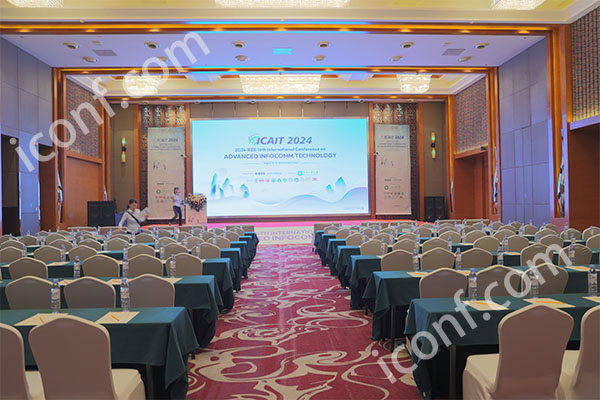

646 views||Release time: Jun 25, 2025
Publishing a paper at an IEEE conference is a widely recognized way to share research in fields like engineering, computer science, and information technology. But if you're submitting for the first time, you may wonder:
How does the IEEE conference paper process actually work?
This article breaks down the entire process into clear stages and shows how platforms like iconf.com help researchers identify, prepare for, and succeed in IEEE conference submissions.

Start by identifying an IEEE conference that fits your topic and timeline.
Key considerations:
Relevance to your research area
Indexing status (EI, Scopus, or CPCI)
Submission deadline and conference date
Location and format (online/in-person)
You can use iconf.com to:
Search upcoming IEEE events
Filter by indexing and subject area
Confirm paper submission deadlines
IEEE has strict formatting requirements. Most conferences use the IEEE conference paper template (usually 4–6 pages).
Author checklist:
Follow the IEEE format exactly (font, spacing, margins)
Include title, abstract, keywords, methodology, results, and references
Use clear, concise English with technical accuracy
Avoid plagiarism and cite all sources properly
Check the conference website for the exact formatting guidelines and download the official template.
IEEE conferences typically use one of these submission systems:
EasyChair
EDAS
Microsoft CMT
Conference website’s internal system
Steps:
Create an author account
Upload the PDF of your paper
Enter metadata (title, authors, abstract)
Choose relevant topics or tracks
Confirm submission and receive confirmation email
iconf.com often provides direct links to the conference submission page to simplify this step.
After submission, your paper enters peer review, typically lasting 2–6 weeks.
Review outcomes may be:
Accepted (with or without minor revision)
Revision requested
Rejected
If revisions are requested, you must:
Address reviewer comments clearly
Submit a revised version within the deadline
IEEE maintains rigorous peer review standards, ensuring quality and relevance.
If your paper is accepted:
You’ll get an official acceptance letter
You’ll be required to register for the conference
You must pay the registration fee to confirm publication
Some conferences require video recording or presentation slides
Accepted authors are generally required to present the paper, either in person or virtually.
After acceptance, submit your camera-ready version, which is the final version for publication.
Requirements include:
Final edits based on reviews
Compliance with IEEE PDF eXpress (for format checking)
Completion of copyright transfer (IEEE eCF system)
Only authors who submit camera-ready papers and register properly will be included in the proceedings.
You will then present your paper at the conference. Presentation formats may include:
Oral presentation
Poster presentation
Online video session (for virtual events)
This is a chance to interact with peers, answer questions, and gain academic visibility.
After the event:
Papers are compiled into IEEE conference proceedings
Submitted to IEEE Xplore (the official digital library)
Indexed in databases like EI Compendex, Scopus, and CPCI
Indexing typically takes 2–8 weeks after the conference.